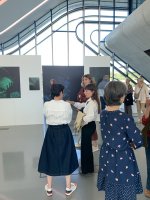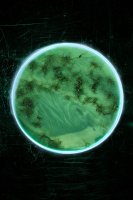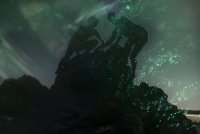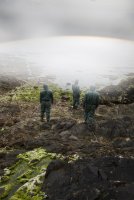Biographie
Alice Pallot (FR, 1995), lives and works between Paris and Brussels (FR/BE).
She studied photography at L'ENSAV La Cambre (Brussels, BE), from which she graduated with a Bachelor's and Master's degree with honors in June 2018. The same year, she participated in an exchange at ECAL (Lausanne, CH) and won the Roger De Conynck prize.
Since then, she has exhibited in European institutions and galleries. In 2022, she participates in the group exhibition .tiff at the FOMU (Antwerp, BE), as a laureate. In 2023, she represents the emerging European photography within the FUTURES network, and presents her work in a travelling collective exhibition (Camera Centro Italiano per la Fotografia (Turin), Copenhagen Photo Festival (Copenhagen), Fotofestiwal (Lodz)).
Alice Pallot publishes in parallel the books: Land (2016), Himero (2020) Suillus (2021, reed. 2022), and co-founds the collective De Anima.
Through expeditions and research, she questions the links between the sciences developed by human beings and their impact on our ever-changing natural environment. And thus points out questions and ambiguities intrinsically linked to our time.
Présentation
In 2022, Alice Pallot was selected to participate in the Résidence 1+2 (Toulouse, FR), a festival of creative residencies aiming to bring photography and science into dialogue. It is within this framework that she develops the series Algues Maudites, a sea of tears, in two phases; in Brittany in collaboration with the association Sauvegarde du Trégor Goëlo Penthièvre and then in Toulouse with the help of scientists from the CNRS Occitanie Ouest, laboratory LEFE.
Alice Pallot is interested in green algae which have been proliferating for many years in Brittany, in coastal waters as well as in certain rivers.
A real environmental and sanitary problem, these algae generate visual, olfactory and toxic pollution. When they are not collected, they form clusters that enter into putrefaction, which if handled or trampled, release a gas, hydrogen sulfide (H2S). Then highly concentrated, this gas becomes harmful and deadly. The multiplication of these algae is induced by the excessive presence of chemical nutrients (nitrate and phosphate) in coastal waters, resulting from the waste of intensive agriculture and consequence of global warming, it contributes to create morbid landscapes, without organic life and with a frozen aspect.
Alice Pallot makes a sensitive documentary, articulated in narrative chapters mixing testimonies, observations, scientific documents and poetic imaginations.
Algues Maudites, a sea of tears is invested by the notion of anticipation. By evoking the real though imperceptible toxicity of algae and by capturing a natural phenomenon: the reality of anoxic environments (when the environment is said to be anoxic, it is because the reduction of oxygen is such that there is asphyxiation), Alice Pallot wishes to confront us with the fragility and unpredictability of the natural world put to the test and the collapse of biodiversity and its ecosystems.
The work Algues Maudites, a sea of tears, also questions the possibility of creating a space and a moment of rebirth in spite of a "fauna, flora, soil" balance that has been broken.
Alice Pallot imagines the extension of a current crisis through a plastic process that pushes the boundaries of the photographic medium, using visual pollution as a photographic filter.



